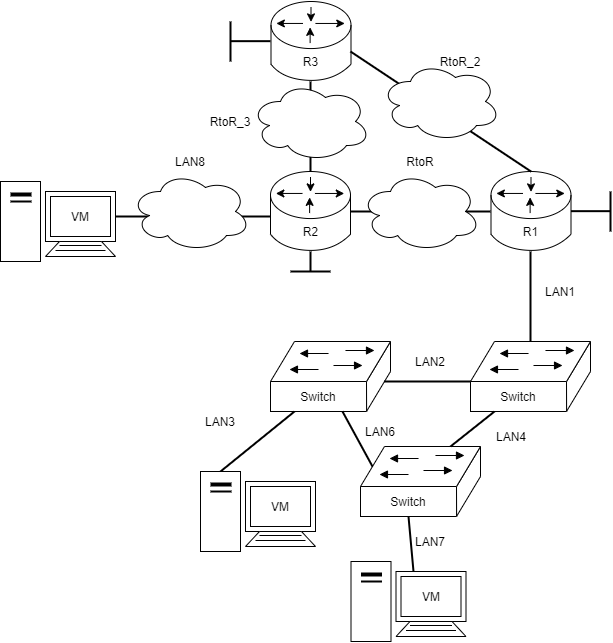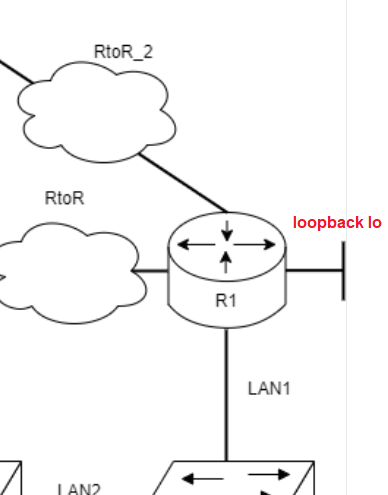E08 Configuring OSPF
 Back to the Material: Loop Detection, part 2 - IPv4, Routing
Back to the Material: Loop Detection, part 2 - IPv4, Routing
Video: Instructions for E08
Topology
This exercise follows E07, thus uses its working configuration.
Preparing the Topology
See the topology above
- Clone a third
vyosvirtual machine. - Attach adapters to the third
vyosVM and update the othervyosVMs to have links accordingly - Use two different 2 host subnets (from E03 Calculating Subnets, Exercise 4) between the routers
- one subnet between R1 and R3
- one subnet between R2 and R3
- Configure the subnets into use on all of the routers (
set interfaces ethernet eth...)
Addressing loopback interfaces
The figure has new drawings of loopback interfaces as presented below.
Address the loopbacks the following way:
- Select an available 2 host subnet (from E03 Calculating Subnets, Exercise 4)
- distribute a single /32 address for each of the routers (you can use all the addresses of the selected subnet on the routers)
The address is configured on the router set interfaces loopback lo address <x.x.x.x/32>
Configuring OSPF on the routers
Ditching Static routing
Delete all the static routes from your configuration on all the routers.
delete protocols static route <x.x.x.x/xx>
Enabling Dynamic Routing - OSPF
- Form adjacencies between all the routers through
set protocols ospf area 0 network <x.x.x.x/xx> - Route all the subnets in the topology with OSPF
- remember the loopback subnets also
Checking for routing table
Verify and document your topology through different show commands on all the routers
show ip ospf neighborshow ip route ospfandshow ip routeshow ip ospf database
Verifying connectivity
Investigate and document the topology through ping and traceroute
Draw conclusions of routes used by the packets based on
tracerouteoutputshowcommands- (logical) topology picture
Configuring (Cyber) Security to OSPF
If you want you can,
- configure OSPF authentication between the devices
- configure passive-interfaces to suitable positions
Back to the Schedule?
License
This course and its materials are written by Karo Saharinen and licenced by Attribution-NonCommercial-NoDerivatives 4.0 International (CC BY-NC-ND 4.0) license.



